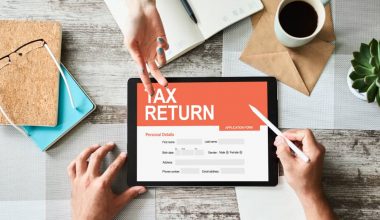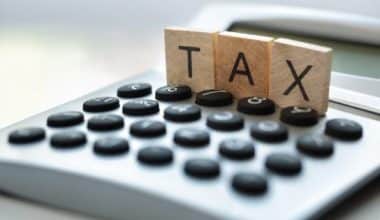For the majority of people, submitting income taxes every year is a burden. Your taxes generate money that the government uses to ensure the welfare of the populace as a whole and to maintain efficient public services like Medicare and Social Security. However, to understand what self-employed tax is used for, here is an article for you. In this article, we define self-employed tax, how to calculate the self-employment tax and its deduction process.
Self Employed Tax
It is your responsibility to determine your tax liability, including how much you owe, when to pay, and how to pay it since your employer is not required to deduct taxes from your paycheck automatically. While some taxes, such as state or federal income taxes, may be familiar to you, working for yourself also introduces a completely new category of taxes to take into account: self-employment taxes.
However, the term self-employed tax refers to the federal government’s collection of taxes from self-employed individuals and small business owners to fund Medicare and Social Security. The self-employment tax is similar to the employer-paid Federal Insurance Contributions Act (FICA). This tax is levied when an individual earns $400 or more in self-employment income during the tax year or $108.28 or more from a tax-exempt church. IRS Form 1040 Schedule SE is used to calculate and report the tax. Persons who earn less than these criteria from self-employment are exempt from paying taxes.
What is Self-Employment Tax?
A self-employed person is obligated to pay self-employment tax, also known as the Self-Employment Contributions Act (SECA) tax, to the federal government in order to support the Social Security and Medicare programs. If you operate as a freelancer, gig worker, independent contractor, sole proprietor, or small business owner, you are regarded as self-employed.
As part of the Federal Insurance Contributions Act (FICA), full-time employees split the expense of paying Social Security and Medicare taxes with their employers: Each payday, employees contribute 6.2% of their gross salary to Social Security and 1.45% to Medicare, and their employers match these contributions, for a combined 15.3%. Nonetheless, self-employed people are liable for the full 15.3% tax rate, which includes 12.4% for Social Security and 2.9% for Medicare.
Self Employed Tax Deduction
Using the self-employed tax deduction process is the key to reducing your tax liability. There are various self-employed tax deduction processes for every self-employed individual, and they include the following:
#1. Home Office
For many employees, working from home has come to be a way of life. Yep, the new business casual attire is pajamas. But, if you’re self-employed and work from home, you can claim a percentage of the costs related to your home office as a tax deduction.
#2. Vehicle Use
It’s true that the piece of metal and plastic on your driveway qualifies as a tax deduction. You can write off the cost of using your car if you use it to transport customers around town, visit clients, or pick up supplies. The deduction for your car might be calculated in one of two ways. When you buy a car and use it for work more than 50% of the time, you can deduct a one-time amount known as a section 179 expense equal to the automobile’s entire cost multiplied by the percentage of time it is utilized for work.
#3. Office Supplies
They can add up, especially if you print things constantly, and harm a lot of trees. Paper, ink cartridges, pens, and other office supplies are all tax deductible. Software purchases and subscriptions are also tax deductible.
#4. Phone and Internet
Mobile phones are not cheap! Your phone and internet service costs are deductible. You must determine the percentage of time you spent using your phone and internet for both personal and business purposes in order to determine your deductible. As commercial and personal use frequently overlap, that task is probably unachievable. However, try your best to estimate accurately and make sure to retain billing bills, and organize your math documentation.
#5. Self-Employment Tax
The self-employment tax is a 15.3% tax on your net profits, as was already indicated. 12.4% of it goes to Social Security, and 2.9% to Medicare. 5 For employees, employers are expected to pay half of Social Security and Medicare; however, if you work for yourself, you are responsible for paying the full amount. The one piece of good news is that since the IRS classifies your self-employment tax payment as a business expense, you can write off half of it.
#6. Educational Expenses
For education or training that enhances or maintains your skills for your current firm, you may deduct tuition, fees, and book costs. The important thing is that the costs must enhance your current talents. Classes in basket weaving won’t cut it. So, it is deductible if you are a freelance writer and go to a writer’s workshop to improve your trade.
How to Calculate Self-Employment Tax
Your net self-employment income for the year is the first factor to be determined when computing your tax. However, to calculate your self-employment tax, you need to follow these due processes:
- Net earnings are typically your self-employment gross income which is less your business expenses for tax purposes.
- Self-employment tax generally applies to 92.35% of your net self-employment income.
- Apply the 15.3% tax rate after calculating the portion of your net self-employment income that is taxable.
- However keep in mind that, for 2023, the Social Security share of the self-employment tax is only applicable to wages up to $160,200.
- Check out the two optional approaches in IRS Form SE to determine your net profits if you incurred a loss or just a tiny quantity of self-employment revenue.
Who Has to Pay Self-Employment Tax?
Generally speaking, you are required to pay self-employment tax if either of the following occurs throughout the year:
- You made at least $400 in net self-employment income (excluding anything you made as a church employee). If an organization you did work for sent you a 1099 form, the IRS may view you as self-employed.
- You earned at least $108.28 from working at the church.
No of your age or whether you get Social Security or Medicare, the tax laws still apply to you.
How to Pay Self-Employment Tax
To pay your self-employment tax, you need to follow these rules:
- You often utilize IRS Schedule C to determine your net self-employment income.
- To determine how much self-employment tax you owe, utilize IRS Schedule SE.
- When you pay the tax, you must submit your Social Security number or individual taxpayer identification number (ITIN).
- In the US, taxes are paid on an ongoing basis, therefore waiting to pay your self-employment tax until the annual tax filing deadline may result in late payment penalties. Instead, you might have to pay quarterly estimated tax payments all year long if you anticipate:
- Even after taking into account your withholding and refundable credits, you’ll still owe at least $1,000 in federal income taxes this year.
- Only about 90% of your tax liability for this year or 100% of your liability for the previous year, whichever is smaller, will be covered by your withholding and refundable credits.
What Taxes Do I Pay as Self-Employed?
Self-employed people typically have to pay both income tax and self-employment (SE) tax. A Social Security and Medicare tax known as the SE tax is mostly applied to people who work for themselves. It is comparable to the Social Security and Medicare taxes that are deducted from most wage employees’ paychecks.
Self-Employment Tax 40%?
15.3% is the self-employment tax rate. The rate is divided into two parts: 12.4% goes to social security
Do You Get Taxed More if You are Self-Employed?
Self-employed individuals are subject to the same federal income tax obligations as other taxpayers.
How Do I Calculate Self-Employment Tax?
92.35% of your net self-employment income is typically subject to self-employment tax. By deducting regular and required trade or business expenses from the gross income you received from your trade or business, you can determine net earnings.
How Do I Avoid Paying Tax When Self-Employed?
The amount of self-employment tax that business owners must pay is determined by your company’s annual net income. Increasing your expenses linked to your business is the only surefire approach to reducing your self-employment tax. Your net business income will decrease as a result, and your self-employment tax will also decrease.
What is The 3.8% Self-Employment Tax?
To determine your self-employment tax due, keep in mind the following: 15.3% of the first $160,200 in earnings are taxed. After $160,200 in earnings, the tax rate is 2.9%. 3.8% of earnings above $200,000 are subject to tax.
Why is the Self-Employed Tax So High?
The IRS considers an entrepreneur to be both the employee and the employer, unlike W-2 employees who “share” this rate with their employers. Thus, the increased tax rate.
How Much Tax Will I pay on 15000 Self-Employed?
The self-employment tax rate is 15.3% of net earnings, as previously mentioned. This rate is made up of a 2.9% Medicare tax and a 12.4% Social Security tax on net income. Income tax is different from self-employment tax.
Related Posts
- What Is Self Employment Tax, and How Do You Calculate It? 
- CONTRACT WORK: Meaning, Examples, Taxes & How It Works
- HOW TO PAY TAXES: What You Should Know & Guide
- How To File Sole Proprietorship Taxes: Detailed Guide
- SELF EMPLOYMENT DENTAL INSURANCE: Is It Worth It?






